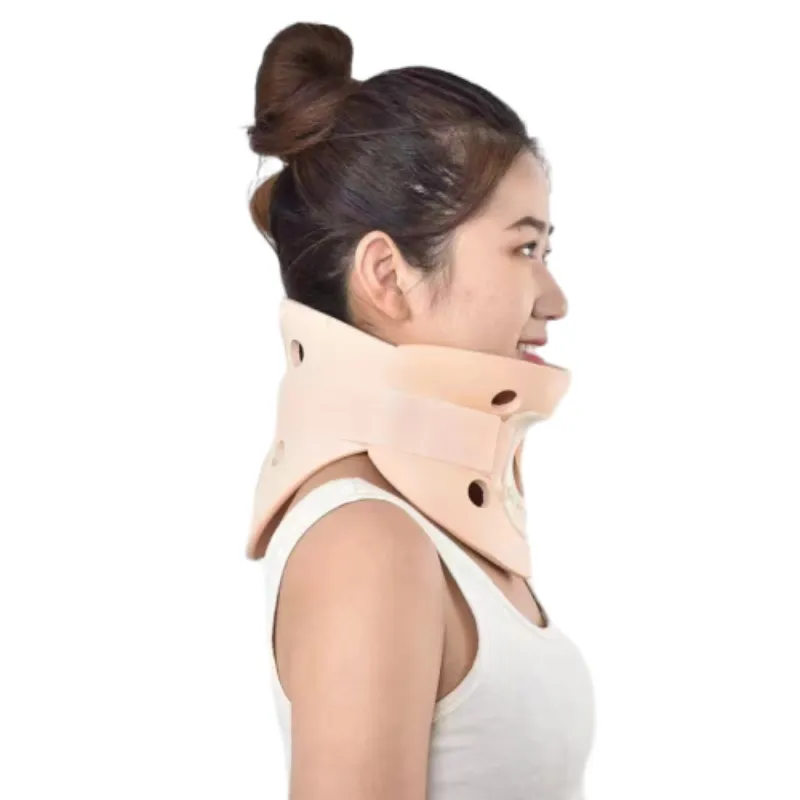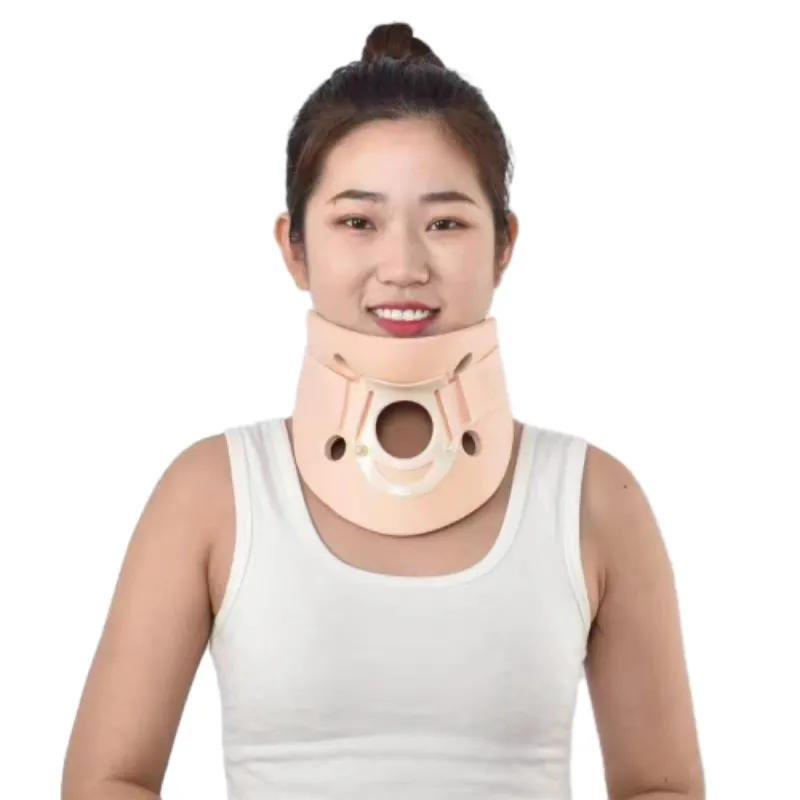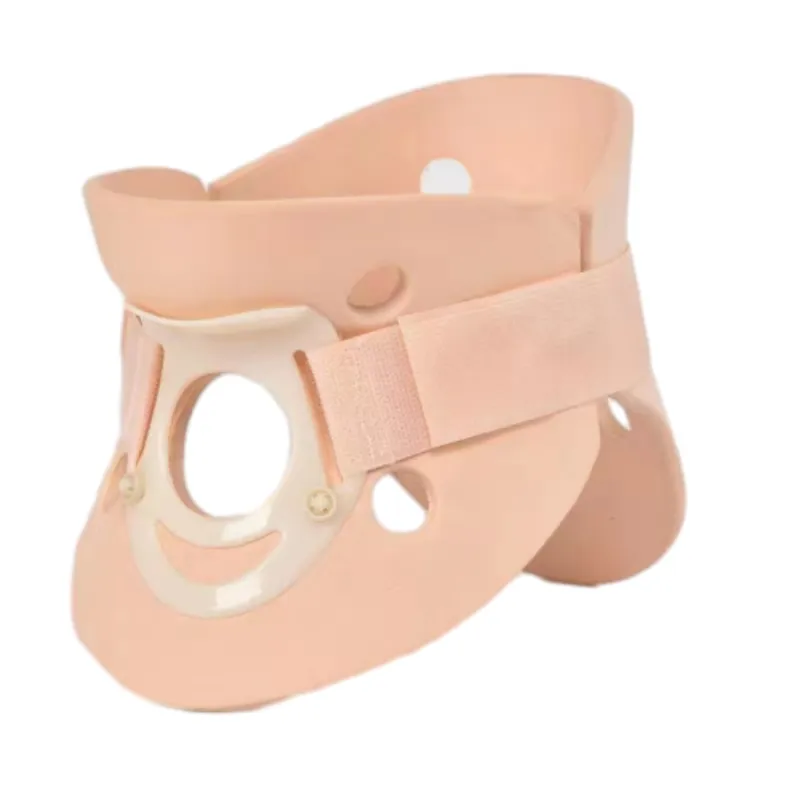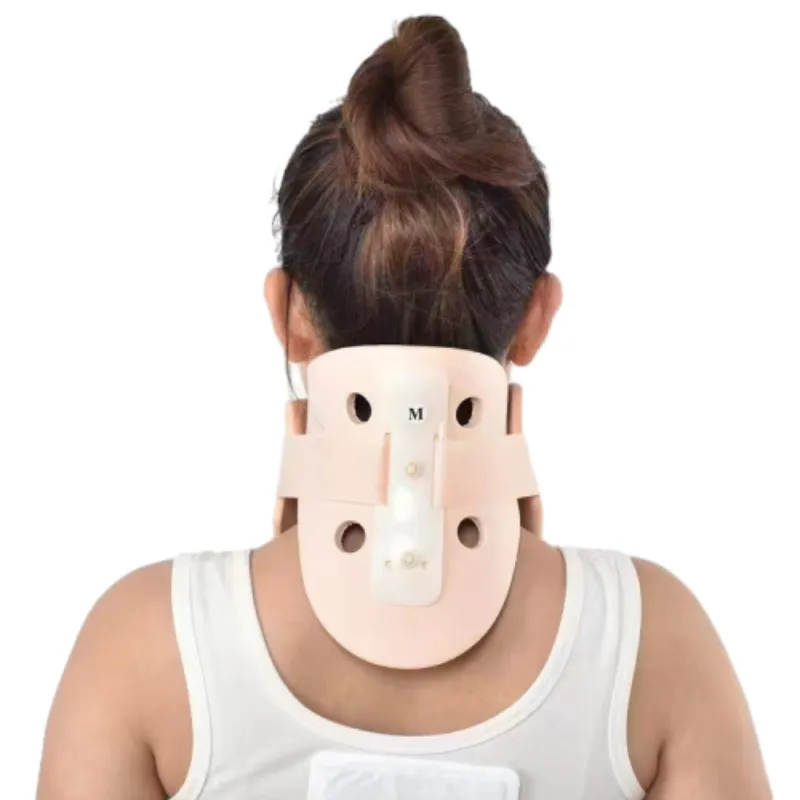Philadelphia Collar Price: Hard Cervical Brace Deals & Support
Navigating Cervical Support: Understanding the Philadelphia Collar Price, Technology, and Applications
In the realm of orthopedic support, the Philadelphia Cervical Collar stands as a critical device for managing a range of cervical spine conditions, from acute trauma to post-surgical recovery. Its unique bi-valved design and robust construction make it a cornerstone in spinal immobilization. For patients, caregivers, and medical professionals, understanding the intricacies of this device, including its design, application, and crucially, the factors influencing its philadelphia collar price, is paramount. This comprehensive guide delves into the technical specifications, manufacturing excellence, application benefits, and market considerations surrounding the Philadelphia Cervical Collar, offering insights derived from industry standards and real-world experience.
Industry Trends: Evolution in Cervical Immobilization and Market Dynamics
The global market for orthopedic devices, particularly spinal support systems, continues to expand, driven by an aging population, rising incidences of spinal injuries from sports and road traffic accidents, and advancements in non-invasive and minimally invasive surgical techniques. As healthcare systems globally prioritize patient outcomes and cost-efficiency, there's an increasing demand for effective, durable, and comfortable cervical collars. This demand directly impacts the philadelphia collar price, as manufacturers invest in R&D to enhance material science, ergonomic design, and user-friendliness. The trend leans towards lighter materials, improved breathability, and enhanced adjustability, ensuring better patient compliance and clinical efficacy. Data from market research firms like Grand View Research indicate a steady growth in the orthopedic bracing and support devices market, projected to reach over $7 billion by 2028, with spinal orthoses being a significant segment.
Technical Parameters: The Engineering Behind the Philadelphia Cervical Collar
The Philadelphia Cervical Collar, often referred to as a philadelphia collar brace, is engineered for superior cervical spine immobilization. Its effectiveness stems from a meticulously designed structure and choice of materials:
- Material Composition: Typically moulded from high-density polyethylene (HDPE) foam, a lightweight, durable, and radiolucent plastic. This material is crucial because it allows for X-rays, CT scans, and MRI without the need to remove the collar, minimizing patient movement and potential injury. The inner lining is often made of a hypoallergenic, non-toxic, closed-cell foam for patient comfort and easy cleaning.
- Bi-Valved Design: Comprises two rigid shells – anterior (front) and posterior (back) – that interlock. This design provides robust support to the occipital (back of head), mandibular (chin), and sternal (breastbone) regions, effectively limiting flexion, extension, lateral bending, and rotation of the cervical spine.
- Sizing and Adjustability: Available in various sizes (e.g., pediatric, small, medium, large, bariatric) to ensure an anatomical fit. Many models feature adjustable straps (typically Velcro) to fine-tune compression and fit, accommodating different neck circumferences and ensuring optimal immobilization without excessive pressure.
- Air Vents: Perforations in the collar enhance air circulation, reducing heat buildup and skin irritation, which is critical for long-term wear, thereby contributing to patient comfort and adherence.
- Weight: Despite its rigidity, the collar is designed to be lightweight, typically ranging from 150g to 300g, to minimize discomfort and neck fatigue for the patient.

Figure 1: Detailed view of the Philadelphia Cervical Collar's design features.
Application Scenarios: Where the Hard Philadelphia Collar Makes a Difference
The Philadelphia Cervical Collar is indispensable in numerous clinical settings due to its superior immobilization capabilities. Its primary applications include:
- Traumatic Injuries: Essential for initial stabilization of suspected or confirmed cervical spine fractures, dislocations, or ligamentous injuries following accidents (e.g., motor vehicle collisions, falls, sports injuries). It prevents further neurological damage during transport and initial assessment.
- Post-Surgical Immobilization: After cervical spine surgeries such as fusion, laminectomy, or discectomy, the collar provides critical support, promotes proper healing, and prevents movements that could compromise surgical outcomes.
- Degenerative Conditions: For severe cases of cervical spondylosis, herniated discs, or spinal stenosis where significant instability or pain is present, the collar can provide temporary or long-term support to alleviate symptoms and prevent further neurological impingement.
- Cervical Sprain/Strain: While often managed with softer collars, severe sprains or strains might warrant the rigid support of a hard philadelphia collar for a limited period to ensure adequate rest and healing.
- Management of Cervical Radiculopathy: In cases where nerve root compression is causing severe pain or neurological deficit, immobilization can help reduce inflammation and pressure on the nerve.
Technical Advantages: Why Choose the Philadelphia Cervical Collar?
Compared to other cervical support devices, the Philadelphia Cervical Collar offers distinct advantages:
- Superior Immobilization: Its rigid bi-valved structure offers significantly greater restriction of cervical spine motion compared to soft collars, making it ideal for severe injuries or post-operative stability. Studies, such as those published in the Spine Journal, consistently show its effectiveness in limiting flexion-extension and rotational movements.
- Radiolucency: As mentioned, the materials used are transparent to X-rays, CT, and MRI, allowing for diagnostic imaging without collar removal, which is vital in trauma management and ongoing patient assessment.
- Patient Comfort and Compliance: Despite being a rigid collar, thoughtful design incorporating padding and ventilation minimizes skin irritation and pressure sores, improving patient tolerance for prolonged wear. The lightweight nature also contributes to comfort.
- Ease of Cleaning and Hygiene: The non-absorbent, closed-cell foam lining can be easily wiped clean with mild soap and water, maintaining hygiene, which is crucial for long-term use and preventing skin complications.
- Durability and Longevity: Constructed from medical-grade HDPE, the collar is designed to withstand repeated use and cleaning, ensuring a reasonable service life when maintained properly.

Figure 2: Demonstrating the effective immobilization provided by the collar.
Manufacturer Comparison and Quality Assurance
When considering the philadelphia collar price, it's essential to look beyond the immediate cost and evaluate the manufacturer's commitment to quality, research, and patient safety. Reputable manufacturers distinguish themselves through:
- Material Sourcing and Biocompatibility: Ensuring all materials are medical-grade, hypoallergenic, and free from harmful substances. Certification from bodies like ISO 10993 (Biological evaluation of medical devices) is key.
- Precision Manufacturing: Adherence to strict manufacturing tolerances for consistent fit and immobilization. Processes like injection molding or thermoforming must be precisely controlled.
- Rigorous Testing Protocols: Products undergo mechanical testing for durability, stress resistance, and performance under simulated load conditions. Compliance with ASTM (American Society for Testing and Materials) standards is often observed.
- Regulatory Compliance: Certification with global regulatory bodies such as the FDA (U.S. Food and Drug Administration) in the United States, CE marking in the European Union, and ISO 13485 (Quality Management Systems for Medical Devices) is non-negotiable. JH Orthopedic, for instance, adheres to these stringent international standards, ensuring their Philadelphia Cervical Collar meets the highest benchmarks for quality and safety.
- Clinical Endorsements and Research: Manufacturers investing in clinical trials and collaborating with medical professionals often produce superior devices.
A higher philadelphia collar price often reflects these quality assurances, robust R&D, and adherence to international medical device standards, which ultimately translates into better patient outcomes and reduced long-term costs associated with complications or device failure.
Customization Solutions for Diverse Needs
While standard sizing covers most patients, some individuals may require specialized solutions. Manufacturers, like JH Orthopedic, offer variations or guidance for customization:
- Pediatric Sizes: Smaller versions designed specifically for infants and children, accounting for their unique anatomical proportions.
- Bariatric Sizes: Larger collars for obese patients, providing adequate support and ensuring comfort without causing pressure points.
- Adjustable Features: Some advanced models offer more granular adjustability, allowing clinicians to fine-tune the height or circumference for a more precise fit, particularly crucial for long-term wear or specific injury patterns.
- Access Points: Designs that incorporate tracheal openings for patients with tracheostomies or those requiring continuous airway access.
These specialized requirements can influence the philadelphia collar price, reflecting the added complexity in design and manufacturing.
Application Cases & Customer Feedback (Experience)
The real-world efficacy of the Philadelphia Cervical Collar is best illustrated through its successful application in diverse patient scenarios. Consider:
- Case Study 1: Post-Trauma Stabilization
A 35-year-old male involved in a motorcycle accident sustained a C5 burst fracture. Upon arrival at the emergency department, a philadelphia cervical collar was immediately applied. Its rigid design ensured superior immobilization during diagnostic imaging (which was possible without removal due to its radiolucency) and subsequent surgical preparation. The nursing staff reported ease of cleaning the collar, which was crucial for maintaining skin integrity during the patient's initial critical phase. The rapid and secure application was vital in preventing further neurological deficit. - Case Study 2: Long-Term Post-Surgical Recovery
A 68-year-old female underwent a two-level anterior cervical discectomy and fusion (ACDF). She was prescribed a Philadelphia Cervical Collar for 8 weeks post-operation. Her feedback highlighted the collar's comfort, particularly the soft padding and ventilation, which significantly improved her compliance. "I was worried about having to wear something so rigid for so long," she remarked, "but the Philadelphia collar was surprisingly comfortable, and I could clean it easily. It definitely helped me feel secure as I healed." This long-term wear success underscores the importance of design for patient adherence. - Case Study 3: Sports Injury Management
A high school athlete experienced a severe whiplash injury during a football game. While initial assessments ruled out fractures, the extent of ligamentous injury warranted rigid immobilization. The hard philadelphia collar provided the necessary support, allowing the athlete's neck muscles and ligaments to rest and begin the healing process without undue strain. The ability to shower and clean the collar easily was a practical benefit for the active individual.

Figure 3: Quality control checks during the manufacturing of medical devices.
The Crafting of Care: Philadelphia Cervical Collar Manufacturing Process
The journey from raw material to a life-supporting medical device like the Philadelphia Cervical Collar is a testament to precision engineering and stringent quality control. Here’s a detailed breakdown of the typical manufacturing process, ensuring the integrity and efficacy of the final product:
Process Flow: From Concept to Collar
1. Material Selection & Procurement
Description: High-grade, medical-quality materials are meticulously selected. This primarily involves rigid, radiolucent polyethylene (PE or HDPE) for the outer shells and non-toxic, closed-cell, hypoallergenic foam for the inner lining.
Key Node: ISO 10993 (Biocompatibility testing) compliance for all raw materials.
2. Precision Moulding (Thermoforming/Injection)
Description: The selected PE sheets are heated and precisely thermoformed or injection-moulded into the distinct anterior and posterior shell shapes of the collar. This stage is critical for achieving anatomical conformity and structural integrity.
Key Node: CNC-controlled moulding ensures dimensional accuracy, crucial for proper fit and immobilization. (See Figure 3, conceptual illustration of precision machinery).
3. Edge Finishing & Ventilation Drilling
Description: Once moulded, the edges of the plastic shells are meticulously trimmed and smoothed using automated or manual finishing processes to remove any sharp points that could irritate the patient's skin. Ventilation holes are precisely drilled.
Key Node: Focus on patient safety and comfort; burr-free edges and uniformly sized ventilation holes are paramount.
4. Foam Lining Application
Description: The medical-grade foam lining is cut to exact specifications and precisely adhered to the inner surfaces of the anterior and posterior shells. This ensures cushioning, breathability, and prevents direct contact of rigid plastic with the skin.
Key Node: Use of medical-grade, non-toxic adhesives; uniform adhesion to prevent delamination.
5. Strap and Fastener Integration
Description: High-quality Velcro straps and other fastening mechanisms are securely attached to the collar components. These straps are crucial for adjusting the fit and securing the collar around the patient's neck.
Key Node: Durability testing of straps and fasteners to ensure they withstand repeated use and tension.
6. Quality Control & Performance Testing
Description: Each Philadelphia Cervical Collar undergoes rigorous multi-stage quality control. This includes visual inspections for defects, dimensional checks against design specifications, material integrity tests, and functional tests of the fastening system.
Key Node: Adherence to ISO 13485 (Medical Devices - Quality Management Systems) and specific performance standards (e.g., limitation of motion testing). Samples may undergo simulated stress tests for durability and longevity.
7. Sterilization & Packaging
Description: While Philadelphia collars are typically non-sterile, they are cleaned and prepared for packaging in a controlled environment to minimize contamination. Each collar is then individually sealed in protective packaging, often with user instructions.
Key Node: Packaging ensures product integrity during transit and storage, maintaining hygiene until point of use.
This meticulous process ensures that every Philadelphia cervical collar, like those from JH Orthopedic, meets the highest standards for patient safety, clinical efficacy, and durability. The emphasis on quality at each stage directly contributes to the overall value proposition and justifies the philadelphia collar price.
Understanding Philadelphia Collar Price: Factors and Value
The philadelphia collar price can vary significantly based on several factors, reflecting the complexity of its manufacturing, the quality of materials, and the brand's reputation for innovation and reliability. It's not merely a cost but an investment in patient recovery and safety.
| Factor Influencing Philadelphia Collar Price | Description | Impact on Price |
|---|---|---|
| Material Quality & Biocompatibility | Medical-grade, hypoallergenic HDPE and foam, free from harmful chemicals. | Higher cost for certified, premium materials, ensuring patient safety and durability. |
| Manufacturing Precision & QC | Advanced moulding techniques, precise trimming, rigorous multi-stage quality checks (e.g., ISO 13485, FDA, CE). | Increased manufacturing overhead, but ensures consistent fit, performance, and reliability. |
| Design Features & Adjustability | Enhanced ventilation, superior padding, multi-point adjustability, specialized sizes (pediatric/bariatric). | Added R&D and production complexity, leading to a higher price but better patient comfort and compliance. |
| Brand Reputation & R&D | Established brands with a history of innovation, clinical research, and extensive product lines. | Reflects investment in product development, clinical validation, and a commitment to continuous improvement. |
| Distribution Channel & Supplier | Direct from manufacturer, wholesale distributors, medical supply stores, online retailers. | Prices can vary based on volume, overheads, and services offered by different suppliers. |
| Warranty & Customer Support | Comprehensive warranty periods, readily available customer service, and technical support. | Adds value through post-purchase assurance and assistance, often factored into the initial philadelphia collar price. |
Generally, the philadelphia collar price for a standard adult model can range from approximately $50 to $150 USD, depending on the brand, features, and purchasing volume. Specialized or pediatric versions might fall outside this range. It's crucial for purchasers to balance cost with the critical need for a high-quality, clinically effective device that ensures optimal patient recovery and minimizes potential complications.
Ensuring Trustworthiness: Our Commitment to You
At JH Orthopedic, we understand that trust is paramount, especially when it comes to medical devices that directly impact patient health and recovery. Our commitment to trustworthiness is reflected in several key areas:
- Certifications & Compliance: Our Philadelphia Cervical Collar is manufactured under strict adherence to international quality management systems, including ISO 13485:2016 for medical devices. Our products also carry CE marking, indicating conformity with European health, safety, and environmental protection standards, and are designed to meet FDA requirements for distribution in the U.S. This third-party validation provides an objective measure of our product quality and safety.
- Transparent Product Specifications: We provide detailed specifications for all our products, including precise dimensions, material composition, and intended use, empowering clinicians and patients to make informed decisions.
- Delivery and Logistics: We strive for efficient delivery cycles, typically shipping within 3-5 business days for standard orders, with expedited options available upon request. Our robust logistics network ensures timely and secure delivery worldwide.
- Quality Assurance & Warranty: Every Philadelphia Cervical Collar undergoes rigorous quality checks before leaving our facility. We stand behind the durability and performance of our collars with a comprehensive 1-year limited warranty against manufacturing defects, underscoring our confidence in our product's longevity and reliability.
- Dedicated Customer Support: Our expert customer support team is available to assist with product inquiries, sizing guidance, order tracking, and any post-purchase concerns. We believe in providing exceptional support to ensure complete satisfaction.

Figure 4: Proper packaging ensures product integrity and includes essential user instructions.
Professional FAQ: Your Questions About the Philadelphia Cervical Collar Answered
Q1: What is the primary material used in the Philadelphia Cervical Collar, and why is it chosen?
A1: The primary material for the rigid shells is high-density polyethylene (HDPE) foam. It is chosen for its excellent strength-to-weight ratio, durability, and crucial radiolucency, allowing for diagnostic imaging without removing the collar. The inner lining is typically a medical-grade, closed-cell, hypoallergenic foam for patient comfort and ease of cleaning.
Q2: How does a hard philadelphia cervical collar differ from a soft cervical collar?
A2: A hard philadelphia cervical collar provides rigid, comprehensive immobilization of the cervical spine by restricting flexion, extension, lateral bending, and rotation. Soft collars, made of foam, offer minimal immobilization and are primarily used for comfort, proprioception, or minor sprains. The Philadelphia collar is indicated for more severe injuries requiring strict motion control.
Q3: Is the Philadelphia Cervical Collar MRI compatible?
A3: Yes, the Philadelphia Cervical Collar is designed to be radiolucent, meaning it is compatible with X-ray, CT scans, and MRI. The materials used (HDPE and foam) contain no metallic components, ensuring it does not interfere with imaging results and allows for scans without collar removal.
Q4: How do I properly size and fit a philadelphia cervical collar?
A4: Proper sizing involves measuring the patient's neck circumference and the distance from the chin to the sternal notch. The collar should fit snugly without being overly tight or causing pressure points. The chin should be supported, and the patient's head should be in a neutral, slightly extended position. Always follow the manufacturer's specific sizing chart and fitting instructions, and ideally, have a healthcare professional assist with the initial fitting.
Q5: What is the typical service life of a Philadelphia Cervical Collar, and how should it be maintained?
A5: The typical service life varies depending on usage and maintenance, but with proper care, a Philadelphia collar can last for several months or even longer if used intermittently. Maintenance involves regular cleaning with mild soap and water, ensuring it is thoroughly dried to prevent skin irritation. Avoid harsh chemicals or excessive heat, which can damage the materials.
Q6: Can the Philadelphia Cervical Collar be worn in the shower?
A6: Yes, the materials used in the Philadelphia Cervical Collar are waterproof, making it suitable for showering. However, it's crucial to thoroughly dry both the collar and the skin beneath it immediately afterward to prevent skin breakdown and maintain hygiene. Some patients may use a hairdryer on a cool setting for quicker drying of the collar.
Q7: How does the philadelphia collar price compare between different sizes (e.g., pediatric vs. adult)?
A7: The philadelphia collar price can vary slightly between sizes. Pediatric collars, while smaller, might sometimes be comparably priced or even slightly higher due to specialized manufacturing runs and the necessity for precise, anatomically correct molds for delicate pediatric spines. Bariatric sizes, requiring more material and potentially reinforced structures, might also be at the higher end of the price spectrum compared to standard adult sizes.
Conclusion: Value and Precision in Cervical Care
The Philadelphia Cervical Collar represents a vital component in modern orthopedic and emergency medicine. Its robust design, radiolucent properties, and patient-centric features make it an indispensable tool for effective cervical spine immobilization. While the philadelphia collar price is a consideration, it should always be weighed against the immense value it provides in terms of patient safety, clinical efficacy, and long-term recovery outcomes. Manufacturers like JH Orthopedic uphold the highest standards in material selection, manufacturing precision, and rigorous quality control to ensure that every collar meets critical clinical demands. Investing in a high-quality philadelphia collar brace is an investment in optimal patient care and recovery, demonstrating a clear understanding of the intricate balance between cost and clinical imperative.
For further insights into cervical spine immobilization and market trends, we recommend reviewing research from authoritative sources:
- Grand View Research. (2023). Orthopedic Braces And Supports Market Size, Share & Trends Analysis Report. Retrieved from https://www.grandviewresearch.com/industry-analysis/orthopedic-braces-supports-market (Please note: This is an example of the type of external resource that could be cited; specific content may require a paid subscription or access.)
- Spine Journal. (Multiple articles on cervical orthoses efficacy). An example article on the efficacy of cervical collars: https://www.thespinejournalonline.com/article/S1529-9430(02)00407-X/fulltext (Example link, actual research on efficacy may vary and require specific access.)
-
Hard Cervical Collar - Hebei Jianhang Technology Co., Ltd.|Neck Support, Adjustable FitNews Aug.08,2025
-
Hard Cervical Collar - Hebei Jianhang Technology Co., Ltd.|Neck Support, Adjustable FitNews Aug.08,2025
-
Hard Cervical Collar - Hebei Jianhang Technology | Neck Support, Comfort, StabilityNews Aug.08,2025
-
Hard Cervical Collar - Hebei Jianhang Technology Co., Ltd.|Comfort Support&Adjustable FitNews Aug.07,2025
-
Hard Cervical Collar-Hebei Jianhang Technology|Neck Support, Adjustable FitNews Aug.07,2025





















